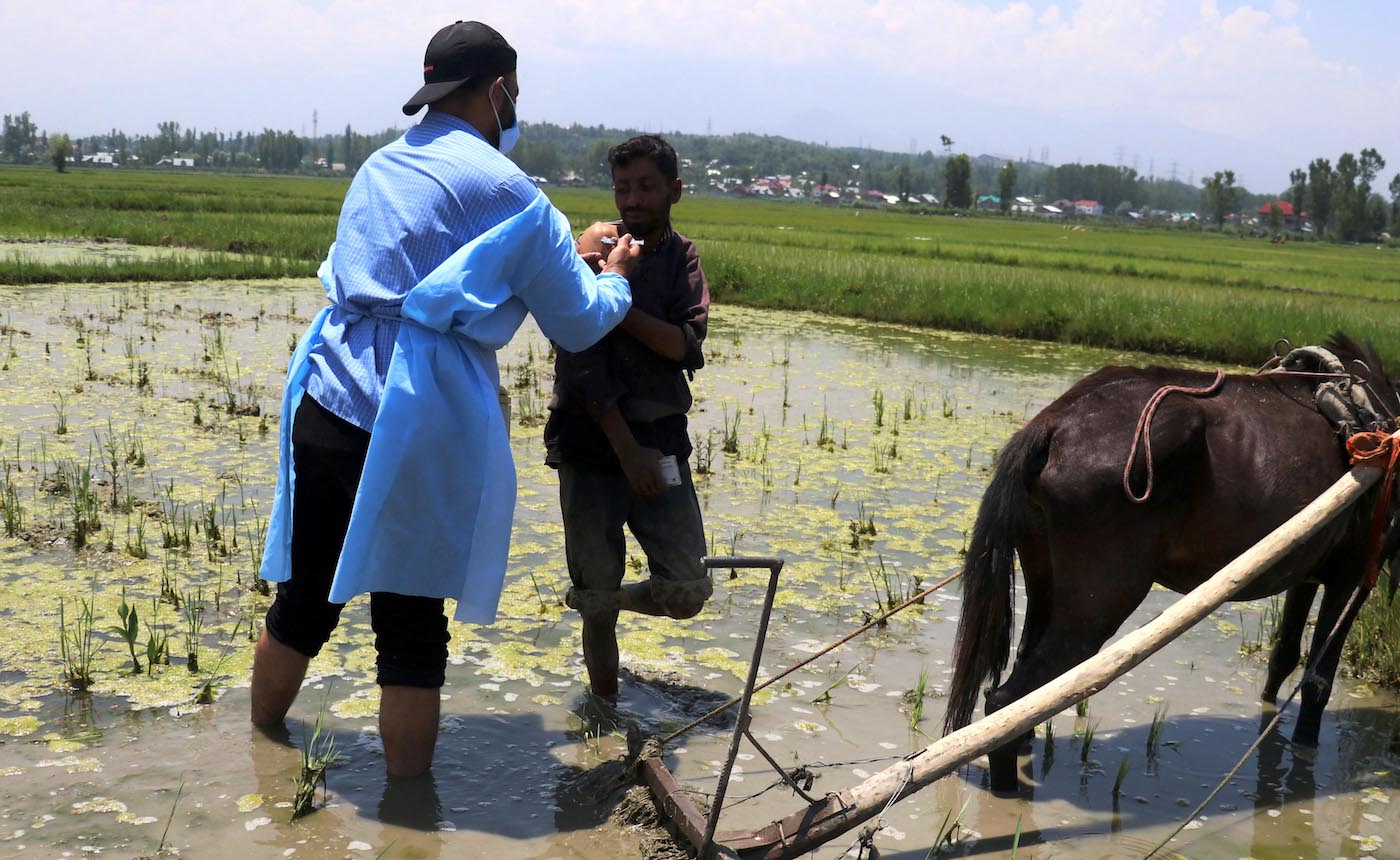by Syed Shadab Ali Gillani
SRINAGAR: Days after being in news for the rare discovery of Alligator Gar fish, Dal Lake is making headlines again, for another unfortunate reason. Thousands of fish have died in the past few days as it is triggering panic within the lake dwellers and the fishermen community.
“We highly depend on fish as our main occupation here, so this sudden death of fish is a matter of great concern for us,” one of the fishermen community living near the spot of fish “mass suicide” said. In Srinagar, Dal lake and the adjoining Nigeen lake are the key sources of fish, outside the main Jhelum river.
This has added to the panic of the residents. The deaths were reported at a spot near the Centaur Lake View Hotel and the SKICC complex.
This is perhaps the first such incident of its kind in this part of the lake that is routinely navigated by the Shikaras and adequately aerated using artificial fountains.
Different people see the crisis differently. “Fish die due to the polluted water of Dal,” Abdul Rashid, a resident of Shalimar said. “The lake is highly polluted. The authorities need to keep a check on the pollution level and try to control it by keeping the drainage system in check.”
Experts, however, see it differently.
A Fisheries official had told the media that this is a perennial affair. He said the temperature fluctuation is the key factor.
“The possible reason may be the decrease in the dissolved oxygen level in the water of Dal and another reason is that of pollution,” Dr Sartaj, who teaches Environmental Science at Government Degree College Anantnag, said. “Increase in the different nitrate and phosphate pollutants can lead to decrease in the level of dissolved oxygen, which indeed can lead to increase in toxicity in the water which often results in the death of different species under the water.”
Sartaj believes the other probability could be the increase in the different agricultural activities in the adjacent areas of the lake including the floating gardens.
The lake gets a lot of discharge from varied sources. While the discharge from the periphery including that of hotels, restaurants and the habitations is diverted to a chain of Sewage Treatment Plants, the pollution generated within the lake goes mostly into the water body. “We see the use of pesticides and fertilizers in these floating markets. These fertilizers also add to the increase in phosphates and nitrates,” according to Sartaj.
Dr Mohammad Irshad, is another environmentalist who teaches at Azim Ji Premji University, Bangalore. He said that most of the fish species die when the level of dissolved oxygen falls 2-4 mg/litre.
“Prolonged overcast conditions can lead to low rate of photosynthesis, causing a dip in dissolved oxygen. Furthermore, conditions get worsened if it is accompanied by hot temperature which will consume a lot of oxygen due to decomposition of organic matter.” Irshad said. “Due to anoxic conditions, the fish will not be able to acquire the adequate amount of oxygen for its survival ultimately resulting in the death of the fish.”
These can be the possible reasons behind this very incident; however, we cannot be sure without comprehensive investigation of the water and affected fish fauna” Irshad said.
“It is a very normal phenomenon and fish of different species died in the incident,” Dr Feroz Ahmad Bhat, Dean Faculty of Fisheries, Sher e Kashmir University of Agricultural Sciences and Technology SKUAST, said. “This is not an isolated event. It happened almost a decade ago and it is completely natural.” He also asserted that if the pollution is treated, the incident can be prevented in future.
A fish mass suicide was earlier reported in Nigeen lake. Later, when the gates of Baba Demb were opened and the hugely polluted waters joined the Jhelum, tens of thousands of fish were seen floating dead.















